Art of MFF
Αχειροποίητος
A Prayer Forged in Metal
A Masterpiece of XXI Century Sacred Art
A mirror of destruction turned toward the divine
A Rebirth of Iconography in a Post-Apocalyptic Age
Traditionally, the Acheiropoietos—the Holy Face of Christ—is believed to be a miraculous imprint of His visage on a cloth. This creation is not merely an artistic statement—it is a spiritual document of our era. In a world where art increasingly severs its ties with the transcendent, Acheiropoietos restores its primal mission: to bridge the human and the eternal. Such art requires no explanation. It becomes the context. It does not challenge tradition—it continues it, elevated to a new turning point. It is in works like this that the seeds of what future generations will call eternal art are sown.
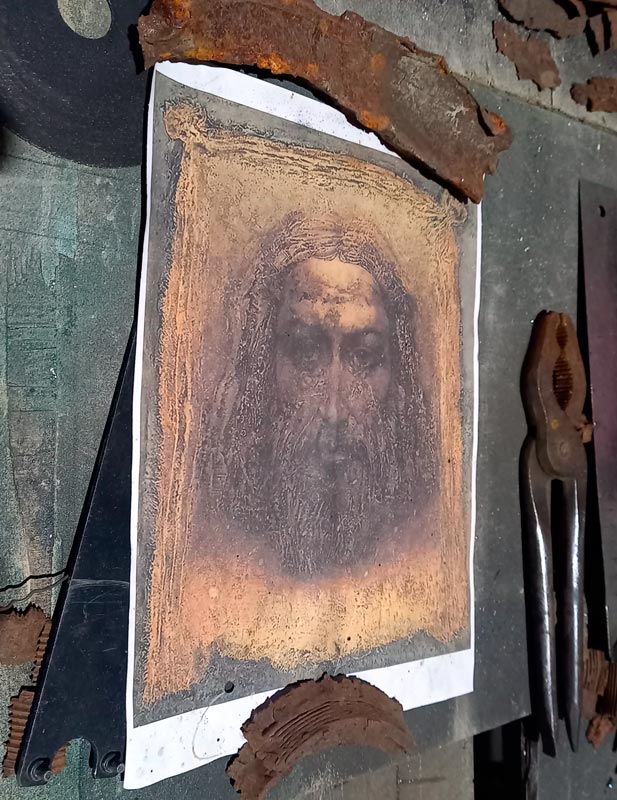
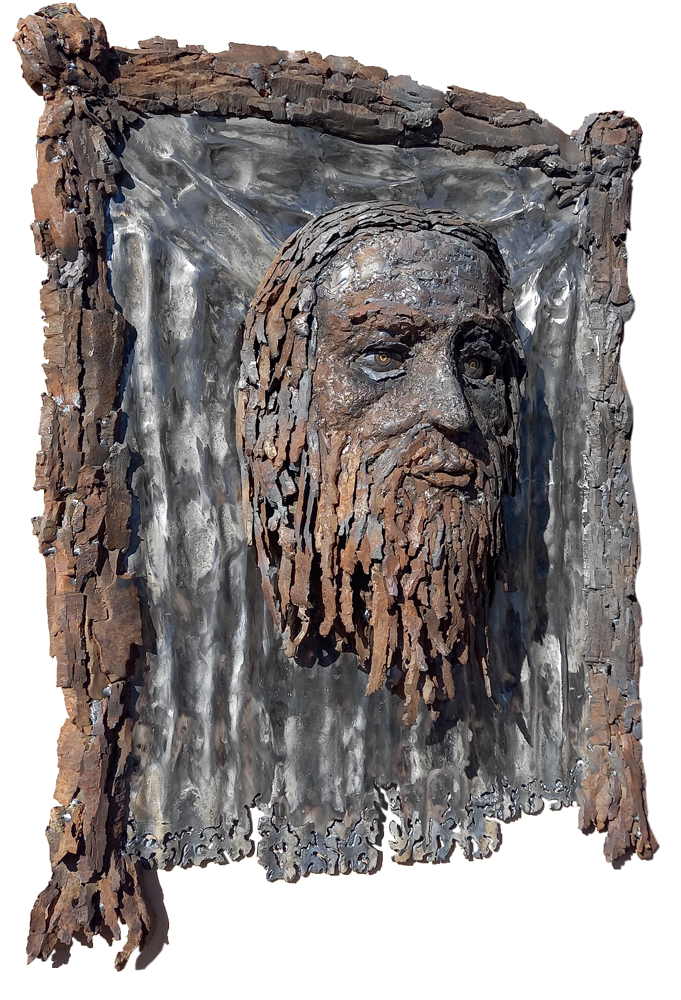
MFF: Art Born of Fire
In the hands of MFF, fragments of deadly ammunition are transformed into the majestic countenance of Christ. Inspired by a revered religious archetype, the image—crafted from destruction—acquires new meaning. It speaks of pain, sacrifice, and hope. It is not merely an artwork, but a powerful reminder of spiritual resurrection—the ability to turn the horrors of war into a plea for peace.

Collaboration with Victor Bielchyk
The sculpture’s elements are forged from the “ashes of war”—fragments of artillery shells and mortars. The sacred veil with which Christ is believed to have wiped His face on the way to the crucifixion is recreated from 30mm automatic cannon casings, gilded with 999.9 fine gold. All welding was executed by the skilled Ukrainian craftsman Victor Bielchyk, a constant collaborator and technical partner of the American artist.
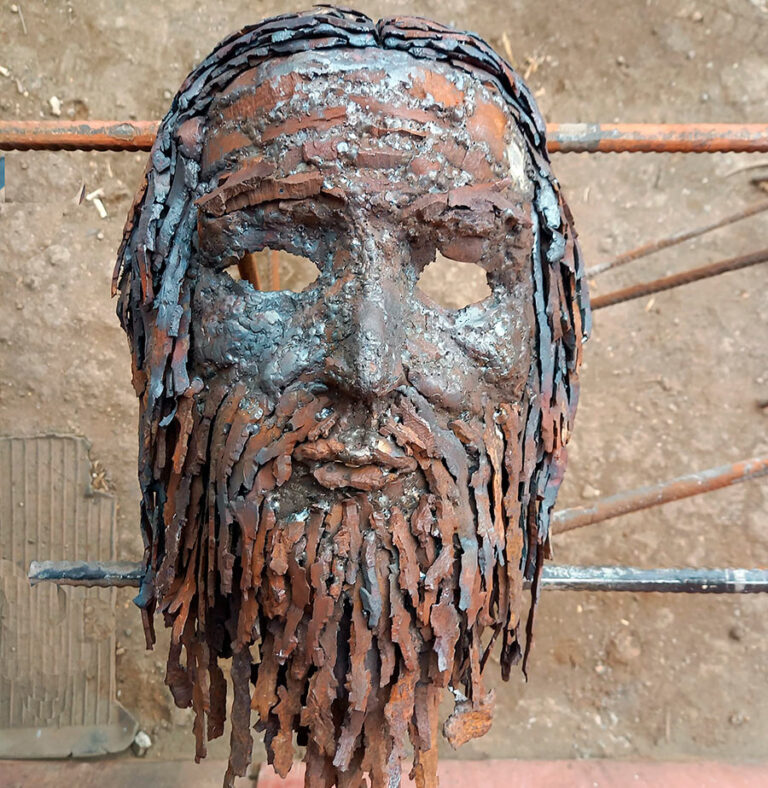

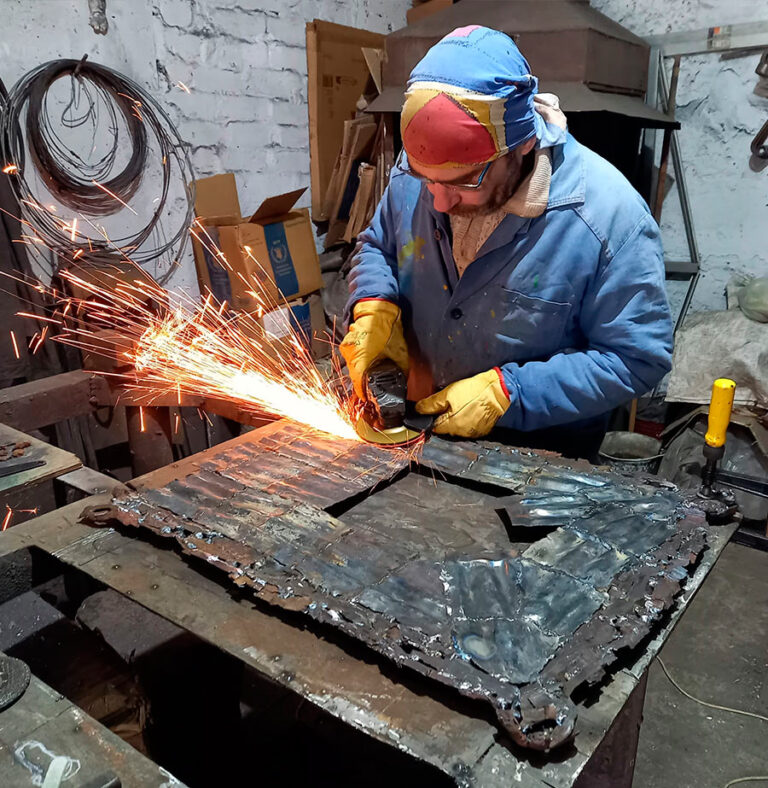
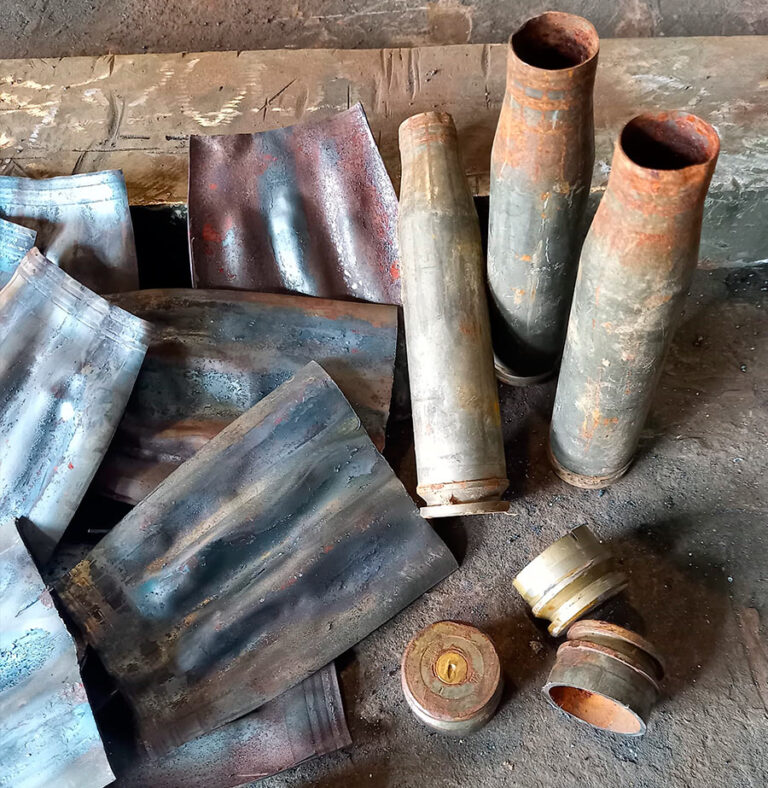
Material as Manifesto
This sculpture is neither an abstract metaphor nor a stylized installation. Its essence lies in its material: real fragments of shells and landmines collected from active war zones in Ukraine. These are not symbols—they are physical evidence. Through artistic transfiguration, these remnants are turned into an icon, making the work a unique case in art history. Here, metal is not just a medium—it is meaning. A new aesthetic is born: an ethics through aesthetics.
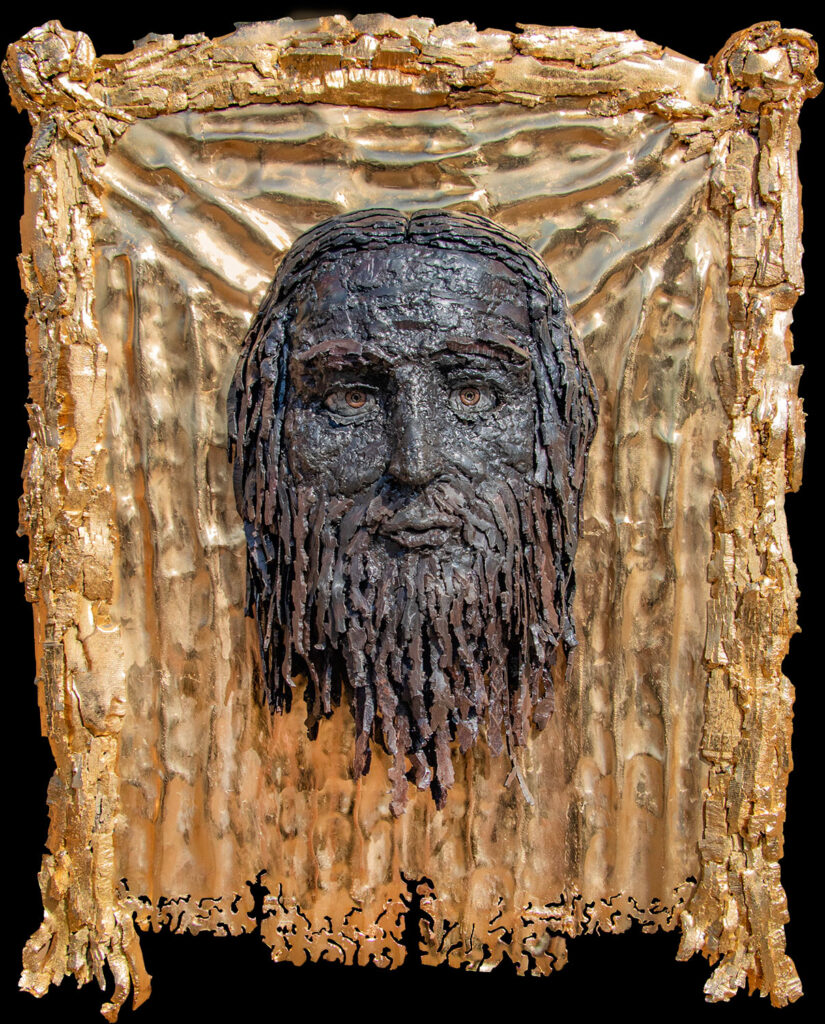
The Holy Mandylion by Sergey Melnikoff
A Sacred Transmutation of War Metal in the Age of Post-Secular Art
By Georg L. Baker
In the heart of 21st-century conflict, a work of sacred art has emerged that defies categorization. The Holy Mandylion, a sculptural icon created by American artist Sergey Melnikoff, a.k.a. MFF, in collaboration with Ukrainian metalworker Viktor Bielchyk, is more than a tribute to faith — it is a spiritual alchemy forged from the very debris of war.
Constructed from actual shrapnel gathered from artillery shells and mortar explosions, the sculpture reimagines the canonical face of Christ as a relic born not from peace, but from destruction. It is a haunting response to the ongoing war in Ukraine — and a testament to the enduring dialogue between violence and transcendence, memory and transformation.
Reclaiming the Sacred in Contemporary Art
In an era where contemporary art often drifts toward irony, simulation, and digital abstraction, The Holy Mandylion arrives as a sincere and startling anomaly. It speaks in the language of relics and redemption, sacrifice and salvation — themes increasingly resurfacing in post-traumatic, post-digital, and post-secular contexts.
Melnikoff’s work does not merely gesture toward the sacred; it inhabits it. Unlike postmodern reinterpretations that play with symbols from a distance, this sculpture draws the viewer into a deeply metaphysical experience. It serves as a bridge — a raw and tangible mediator — between the annihilating matter of modern warfare and the timeless archetypes of religious tradition.
Matter Transformed: From Shrapnel to Grace
The physical composition of the sculpture is as symbolic as it is literal. Fragments of bombs, cast in iron — a notoriously unforgiving and difficult material — are assembled piece by piece to form the anguished face of Christ. None of these elements have been altered or reshaped; they are used as found, preserving the violence etched into their form.
This process becomes an act of artistic transubstantiation: weapons of death reimagined as vessels of grace. The very impossibility of the material becomes a metaphor for spiritual resistance. Melnikoff does not impose his will upon the iron; instead, he engages in a silent negotiation with it, allowing its scars to remain visible, even honored.
This respectful yet defiant approach places the work within a lineage of artistic mastery — reminiscent not of industrial design, but of Renaissance sculpture, where every gesture, every curve, is guided by both vision and reverence.
Reinventing the Acheiropoietons
The iconographic reference is unmistakable. The Holy Mandylion directly alludes to the acheiropoietons — the “image not made by human hands,” a miraculous imprint of Christ’s face central to Byzantine devotion. Yet here lies Melnikoff’s radical gesture: he reproduces the “uncreated” through the most human of acts — sculpting, welding, assembling.
In doing so, he does not undermine the sacred narrative but rather renews it. In a world where the boundaries between religion, art, and ideology are increasingly blurred, this reimagined acheiropoietons challenges viewers to consider where divinity might still reside.
The sculpture’s aesthetic — unpolished, rusted, fractured, and punctuated with gold-plated bullet casings — speaks in the harsh dialect of the present. And yet, its silent gaze reaches beyond time, into the eternal.
A Relic for a Wounded Age
The Holy Mandylion is not content to sit behind museum glass. It exists as a living relic — a work that absorbs the functions of prayer, memorial, witness. In secular spaces, it creates a sacred zone. Its presence invites not just observation but participation — emotional, ethical, and perhaps even spiritual.
The shimmering gold of Veronica’s veil contrasts with the almost-charred visage of Christ, provoking not merely aesthetic admiration, but inner reckoning. The effect is profoundly cathartic. It offers no easy comfort, but instead a confrontation: with suffering, with endurance, with the possibility of hope.
Conclusion: A Liturgy of Metal and Memory
In a time when visual culture is increasingly dominated by distraction and spectacle, The Holy Mandylion reasserts the possibility of the sacred in art. It doesn’t preach. It transforms.
It asks: Can the sacred still speak — even now, even here — without the trappings of institutional religion?
Its answer is forged in fire and silence. And it is yes.

